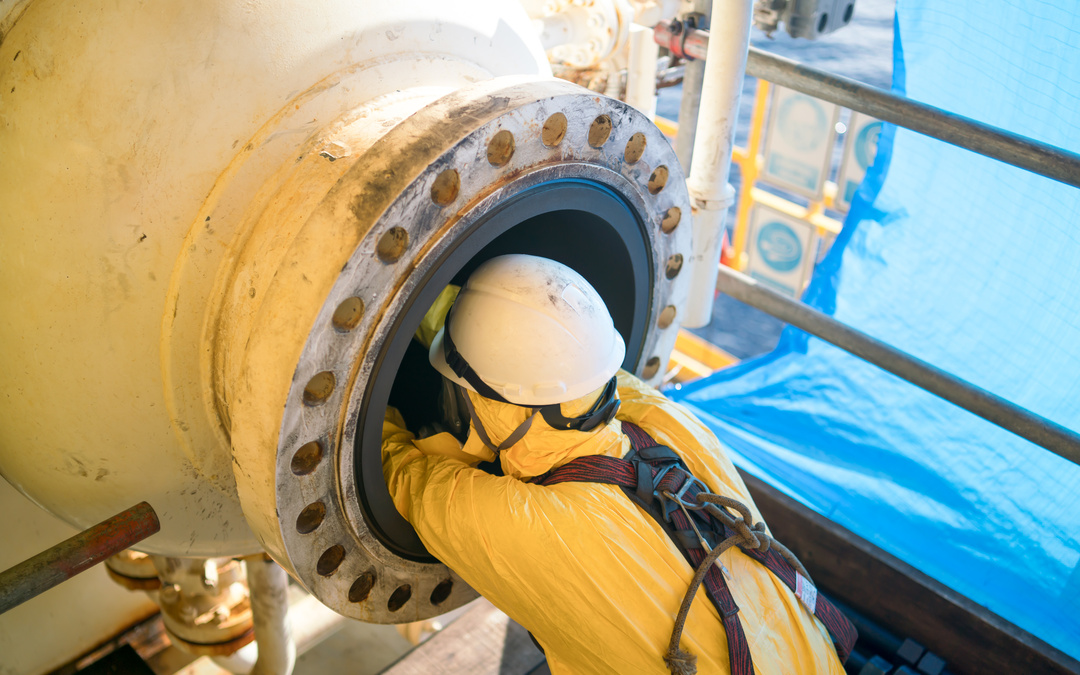The NFPA 350 Guide For Safe Confined Space Entry And Work
The NFPA 350 Guide For Safe Confined Space Entry And Work
October 24, 2022 |
A while back, it was determined that every year, in confined spaces, anywhere from 90 to 100 workers died. Despite regulations (i.e., OSHA’s Permit Required Confined Space Standard), these numbers are still accurate today. This is unacceptable. What’s more, despite efforts by the best emergency response team available, rescuers ended up being additional casualties in far too many cases.
When it comes to OSHA, there is never a shortage of regulations, rules, guidelines, stipulations, etc. They supply you with every one of them. That’s all well and good, except that, when it comes to instruction on ways you can abide by all of their rules and regs, you may find OSHA lacking.
Enter an NFPA 350 guide, to provide information that supports the following…
How to:
- Ventilate
- Control hazards
- Perform gas monitoring
- Identify hazards
Employers find that OSHA standards are somewhat supplemented by the Guide for Safe Confined Space Entry and Work by the NFPA. Additional guidance is provided regarding confined space entry and work as well as how entry programs for confined spaces can be improved.
OSHA Versus NFPA 350
Though both OSHA and NFPA work toward providing employees with a safer environment, they differ in that you are told WHAT to do by OSHA, but NFPA explains HOW. Here are some examples.
Atmospheric Monitoring Chapter
Here, the appropriate calibration procedures, gas monitor, and interpretation of results are explained – not just stated. Best practices are also included regarding the following:
- Establish safe entry levels
- Test to determine the time amount for a sample to move through a particular tubing length and for the sensor to detect it
- Prior to initial monitoring, shutting down ventilation
Ventilation Chapter
Here, depending on the hazard, in a confined space, the proper selection and configuration of ventilation equipment is explained. Not just the equipment, but how to select it. Information on bonding and venting inert atmospheres is also provided. So is information regarding grounding of combustible or flammable atmospheres. In an annex, the chapter even provides typical ventilation configuration drawings.
Demonstrated Competencies
For teams involved in entering and working in confined spaces, one critical aspect (as explained by NFPA 350) is that of demonstrated competencies. Defined by OSHA are the following roles: Entry supervisor, attendant, and entrant. But how do you know these individuals know what’s expected of them? Recommended competencies for such individuals is suggested by NFPA 350. These are people who perform tasks like rescue, ventilation, and gas monitoring. (Individuals such as this may or may not be the entry supervisor or attendant.) Here is an example.
Gas tester: Typically, this individual would be knowledgeable regarding how to turn the gas monitor on and record results. NFPA takes it further saying that they should also know how to interpret atmospheric monitoring results and understand how to calibrate it.
Rescues
NFPA 350 also addresses confined space rescue. The Rescue Chapter takes a tiered approach to response. Information on the following is included:
- Rescue competencies
- Rescue configurations
- Rescue gear
- Pre-incident evaluation and planning
MOC (Management of Change)
Change is related to any number of incidents that take place in confined spaces. Therefore, NFPA 350 addresses this. Potential effects of modification are identified and evaluated by the MOC system. These apply to combined space:
- Work tasks
- Content
- Materials
- Equipment
- Configurations
In an annex, a sample MOC form is provided.
PtD (Prevention through Design)
To eliminate inherent hazards and risks, the concept of PtD seeks to begin a design process. These are risks associated with products, equipment, facility designs, etc. Retrofitting control costs can be minimized by PtD. The use of administrative hazard control measures, which are often are labor-intensive, can also be lessened.
Here are some examples of two areas of concern:
- Documents having to do with the design and ventilation of manure pits
- Documents having to do with the design of wastewater and water facilities
Note: Every 3 to 5 years, evolving documents such as NFPA 350 are revised. These documents are, in fact, ever-evolving. This way, information is always relevant and current.
Rescue Solutions Can Help Your Company Comply With NFPA Standards
Working with Rescue Solutions guarantees assistance that applies to real-world scenarios and meets all regulatory compliances. When your business needs emergency rescue equipment, safety training, rescue training – or safety and rescue services – turn to us. We’re here for you… and all of your workers.
Rescue Solutions is the most highly reviewed and rated rescue training and safety company in the area. For over 100 years, Kentuckians have stayed safer at work using our solutions. Every day, we focus on creating safer workplace environments. We make careers safer and better for your entire team. Everyone wants to go home safely to their friends and/or families at the end of the workday – we understand that.
Got questions? Would you like to speak to a representative? Feel free to contact us by using our convenient online form, or phone us at 859-412-1512. We look forward to speaking with you.
